MFA GORE Owner's manual

CONTAMINATED - If your protective hood has become contaminated with blood, body fluids, toxins,
chemicals, or other hazardous substances, use extreme caution in removing your hood. DO NOT contact
the surface of your hood with your bare hands. Remove your hood by grasping the hood with both hands
below your chin, lifting the hood up and over your head to the rear, avoiding bringing the contaminated
hood in front of your face. You may seek assistance in removing your hood and other parts of your
ensemble to minimize your exposure to any contaminants. Avoid spreading contaminates to your personal
belongings, your living quarters, interior spaces, and vehicles. Any damage or change in condition must be
corrected before you reuse your hood.
CARE, MAINTENANCE, CLEANING AND STORAGE INSTRUCTIONS
Proper Care, Maintenance, Cleaning, and Storage of Hoods –It is important that you keep your protective
hood clean, free of contamination, properly maintained and stored at all times. Protective hoods that are
dirty or contaminated pose significant hazards. The wearing of soiled or contaminated protective hoods can
cause acute or long-term health hazards. Many contaminants can be absorbed through/by the skin and
some are carcinogenic. Many contaminants are flammable. Protective hoods that are soiled do not provide
adequate protective performance or requirements. Refer to NFPA 1851 - Standard on Selection, Care, and
Maintenance of Protective Ensembles for Structural Fire Fighting and Proximity Fire Fighting for additional
guidance. A thorough knowledge of the content of NFPA 1851 publication is recommended. If cleaned and
maintained properly, hoods will continue to offer their protective properties, but will not do so indefinitely.
Cleaning Preventive Measures / Precautions –Improper cleaning can severely damage
protective hoods.
* DO NOT USE CHLORINE BLEACH OR DETERGENTS CONTAINING CHLORINE (such
substances compromise the protective qualities of your protective hood by rapidly breaking
down hood materials)
* DO NOT USE FABRIC SOFTENERS OR DETERGENTS CONTAINING FABRIC SOFTENERS
* DO NOT USE A WASHING MACHINE THAT EXCEEDS AN ACCELERATION OF 100 Gs
* DO NOT WASH YOUR PROTECTIVE HOOD WITH PERSONAL ITEMS
* DO NOT COMMERCIALLY DRY CLEAN
* DO NOT LINE-DRY IN DIRECT SUNLIGHT
* DO NOT STORE IN DIRECT SUNLIGHT
* Wear protective gloves and eye/face splash protection when cleaning soiled items
* Use regular mild detergent
* Water temperature not to exceed 105°F (warm water recommended)
* Tumble dry heat not to exceed 105°F (low-heat recommended)
Machine Wash Cleaning Instructions –Washing machines and dryers may be used, but only
under special conditions. If washing with protective garments, wash your protective hood
with only the liners of your protective garments. Do not wash your hood with garment outer
shells, as the hardware and hook/loop closure tape will damage your hood. Use the
following procedures if machine washing and drying:
1. Choose a washing machine that is used for cleaning protective clothing. While top-loading
machines may be used, front-loading washers/extractors are preferred, as these machines are
less likely to physically damage clothing and can be programmed for specific water levels,
temperatures, and times. DO NOT USE A WASHING MACHINE THAT EXCEEDS AN
ACCELERATION OF 100 Gs
2. Brush off any loose debris. Should any debris or materials be adhered to the components/
fabric of the hood, remove the hood from service until it can be professionally inspected and/
or cleaned to a serviceable condition.
3. Pre-treat heavily soiled or spotted areas.
4. Unless otherwise instructed, load machine to 80% of its rated capacity. Overloading will
result in inefficient cleaning.
5. Use mild wash settings with warm water temperature.
6. Use a regular mild detergent in volume according to the detergent supplier’s instructions.
7. Tumble dry low-heat setting or line dry in a well-ventilated, cool, shaded area –NOT IN
DIRECT SUNLIGHT.
8. Inspect the hood and if necessary rewash the protective hood or submit it for advanced
cleaning procedures.
Majestic Fire Apparel, Inc.
PO Box 248 - 255 Wagner St.
Lehighton, PA 18235
P: 610-377-6273
F: 610-377-6221
www.majhoods.com/gore
WARNING & USER INFORMATION GUIDE
Protective Hoods for Structural Fire Fighting
NFPA 1971-2018, UL Certified
GORE® Particulate Hood
manufactured and distributed by
Majestic Fire Apparel, Inc.
By removing this Warning & User Information Guide from your protective
hood you are confirming you have read and completely understand the
information and instructions provided. Only the end user shall remove this
information prior to using this hood.
* Do not use this protective hood if you have not read and understood this guide
and the label on your hood.
* Do not use this protective hood if you have not been trained and supervised for
proper use.
* This hood will not protect you from all hazards under all conditions.
* This hood must be worn as a part of a complete protective ensemble. It is the
responsibility of your department or organization to determine the suitability of
this hood for its intended use, and when this hood must be worn together with
other ensemble elements, and to ensure that the selected ensemble elements work
together to provide the intended protection.
* You must properly care for, clean, inspect, store and maintain this hood according
to the recommended instructions in this guide in order for the hood to provide
effective protection.
WARNING –CAUTION - DANGER
YOU MAY DIE OR SUSTAIN SERIOUS INJURY IF YOU DO NOT HAVE THE
SPECIAL TRAINING AND KNOWLEDGE TO CORRECTLY USE THIS
PROTECTIVE HOOD AND/OR HAVE NOT READ THIS WARNING & USER
INFORMATION GUIDE. IF YOU WERE NOT GIVEN A COMPLETE WARNING & USER
INFORMATION GUIDE OR MISPLACE THE WARNING & USER INFORMATION GUIDE,
ALERT YOUR ORGANIZATION OR CONTACT MFA, INC. FOR A REPLACEMENT.
Routine Cleaning –Clean your protective hood after each use or whenever your hood
becomes soiled.
Advanced Cleaning –Your protective hood must be subjected to an advanced cleaning at
least every 12 months at the time of advanced inspection or whenever soiling requires
additional cleaning. Advanced cleaning must be carried out by an individual with your
department or organization that is qualified by your department or organization, or an
Independent Service Provider. Full written documentation of advanced cleanings should be
kept.
Decontamination –Proper decontamination of your protective hood will depend on the type
and extent of contamination. Do not wear a protective hood that was contaminated until
verification has been provided that your protective hood is free from contamination.
Blood or other body fluids - If your protective hood becomes contaminated with blood or bodily
fluids, immediately isolate the hood and inform your supervisor, department, or organization. Your
protective hood must be subjected to an advanced cleaning, using specialized procedures.
Chemicals, toxins, fuels, or other hazardous substances - If your protective hood becomes
contaminated with chemicals, toxins, fuels, or other hazardous substances, immediately isolate
your hood and remove it from service. Take extreme caution not to cross-contaminate other clothing
items. Immediately inform your supervisor, department, or organization.
Repairs –Do not attempt to repair your hood. If damaged, report the damage to your
supervisor, department, or organization and obtain a new hood as a replacement.
Considering the cost of a new protective hood, repair is not practical or recommended.
Suggested Storage –Store your hood only when it is clean, dry, and free of contamination.
Storing wet hoods will promote growth of germs, bacteria, mildew, fungus, or other harmful
substances with the potential to cause skin irritation, rashes, diseases and/or illnesses. Wet
conditions can also lead to deterioration of hood materials. Keep hoods away from potential
contaminants such as oils, greases, or other chemical substances. Store your hood in a dry,
clean, ventilated area - away from direct sunlight and away from tools or other sharp objects.
Do not store your hood with the face opening in tension. Do not store your hood with your
personal belongings or in a personal living area. Do not store your hood in the pocket of your
protective coat or pants as this may lead to contamination and/or damage.
RETIREMENT AND DISPOSAL
The decision for the continued service of your protective hood must be made by a qualified
individual within your department or organization. If you have doubts about your protective
hood and its condition, immediately bring this matter to the attention of your supervisor,
department, or organization. Protective hoods that are no longer deemed serviceable
(withdraw from service) for reasons of damage, contamination, or other unsafe condition
must be disposed of in a manner whereby the protective hood cannot be reused (such as
cutting hood into pieces). Contaminated hoods must be disposed of by your department or
organization in accordance with federal, state/provincial, or local regulations.
If you are burned or injured while you are wearing your protective hood, your protective
hood must be withdrawn/ removed from service and retained by your department or
organization for an appropriate period as determined by your department or organization.
WARRANTY
Your protective hood is warranted, by MFA, Inc., to be free from defects in material and
workmanship for one year. This warranty does not cover normal wear or unusual exposures,
including abrasive wearing of close-tolerance accessories—such as voice amplifiers. This
warranty is in lieu of all other warranties, expressed or implied, including but not limited to,
implied warranties or marketability and/or fitness for a particular purpose. MFA, Inc. shall
not be liable for incidental or consequential damages.

INTRO
Your protective hood is intended to provide limited protection to your head and neck as an interface
device of a properly selected and configured protective ensemble during structural firefighting and
related emergency response activities. Fire fighting is an extremely and unavoidably dangerous activity.
The numbers of hazards encountered at fire and emergency scenes are limitless and constantly changing.
It is impossible to list all types of hazards which you will confront. While your protective hood is designed
to provide protection against a number of fireground hazards, your protective hood will not protect you
against all exposures and under all conditions, even when worn properly. You must exercise caution at all
times to avoid hazards for all operations.
This Warning & User Information Guide provides information and instructions related to the selection, use,
care, and maintenance of your protective hood. This guide does not tell you when and under what
circumstances you should wear your protective hood. This guide tells you how to wear your protective
hood, and provides an understanding of the limitations in how your hood may or may not protect you.
Determining the suitability of your protective hood for specific emergency operations rests with your
department or employer, who has the legal responsibility to conduct a hazard assessment and decide if
your protective hood provides appropriate protection against encountered hazards.
In addition to this guide which provides basic information to adequately care for and maintain your
protective hood, please refer to NFPA 1851 for additional procedures that should be performed only by
trained and qualified personnel (such as, but not limited to advanced inspection, advanced cleaning,
decontamination, and retirement).
REVIEW BEFORE USING
General Construction and Features
Your hood has been manufactured to comply with and is certified to NFPA 1971, Standard on Protective
Ensembles for Structural Fire Fighting and Proximity Fire Fighting., current edition at time of manufacture.
MFA, Inc. protective hoods are primarily constructed of fire retardant knit materials that cover the
wearer’s head and neck. Protective hoods include a face opening designed to fit around the face-piece of
a self-contained breathing apparatus (SCBA), with a bib/apron that extends down the body on the sides,
front, and back of the wearer’s upper torso (the length of the bib/apron depends on the specific hood
model). Descriptions of the available types of fire retardant materials and different style features are
provided on MFA, Inc.’s website at www.majhoods.com
Barrier Protection: Your hood is equipped with a particulate blocking layer. The hood will limit the
ingress of particulates in accordance with NFPA 1971. Your protective hood will not provide protection
from liquid exposure to your head, face, and neck area –and therefore will not protect you from chemical,
radiological, or biological hazards which can cause death, injuries, diseases, and/or illnesses. Water and
other liquids may enter openings in the interfaces between the hood and other ensemble elements. Fur-
thermore, your hood does not offer any protection from hazardous vapors or gases, liquefied gases, or
cryogenic liquids.
Safety Considerations and Use Limitations
It is critically important that you have read and understood this guide and the label provided on your
protective hood PRIOR to using your protective hood. In order to reduce your risks (but not eliminate
risk) do not wear this protective hood unless:
You understand Label, Warning & User Information Guide, and Applicable Standards: You have read,
fully understood, and strictly follow this guide and all labels for this hood; the NFPA standard listed on the
hood certification label; and applicable national, state/provincial, and local regulations pertinent to
emergency operations.
Your Use is In Accordance with Applicable Standards and Regulations: Your use of this protective hood is
consistent with NFPA 1500, Standard on Fire Department Occupational Safety and Health Program, and
Code of Federal Regulations Title 29, 1910 Subpart I-Personal Protective Equipment, 1910.132 General
Requirements, and any specific regulations that pertain to your local area. Knowledge of the design,
performance, use limitations, and content of NFPA 1971 and NFPA 1851 publications is also recommended.
Need for Hazard/Risk Assessment: Your department, organization, or employer has conducted a hazard/
risk assessment and, by issuing you this hood, has determined that this hood provides a suitable/
acceptable level of protection against identified hazards for the particular emergency operations
consistent with applicable national, state/provincial, and local regulations.
Your Hood is Properly Adjusted: Your hood must be adjusted and worn properly to provide protection to
portions of your face, head, and neck that are not covered by the SCBA facepiece, coat collar, and helmet.
Heat Stress: Wearing your protective hood or any other protective ensemble may increase your risk of
heat stress which may cause heart attack, stroke, dehydration, or other health-related conditions resulting
in injury, illness, or death. At the first sign of heat stress, immediately seek medical help!
Burn Injury: Your protective hood will not protect you from all burns, injuries, diseases, conditions or
hazards. If your protective hood is exposed to radiant, convective, or conductive heat, or comes in contact
with a hot environment or hot object, you may be burned underneath the protective hood with no
warning and no sign of damage to the protective hood.
* compromise in seams and/or stitches –ensuring there are no broken or missing stitches
(thread),
* elastic face opening - assess whether the face opening is still elastic and has not become
overextended. The face opening of your protective hood must fit securely around your SCBA
facepiece each time you wear it,
* label legibility –labels should not be removed, and information/markings should be legible
* questionable appearance or characteristics .
Upon inspection, if any of the above conditions exist, without delay alert the supervisor of your
department or organization, and request a determination on the continued serviceability of your
protective hood. Considering the cost of a new protective hood, repair is generally not practical
or recommended.
Advanced Inspections –Your protective hood must be subjected to a more thorough inspection at
least every 12 months, after every advanced cleaning, or whenever there is a concern about its
condition for continued service. This inspection must be carried out by an individual with your
department or organization who has been trained in advanced inspections or by a qualified and
accepted independent service provider. Full written documentation of these inspections should
be kept.
WEARING INSTRUCTIONS
Donning –Use the following steps for putting on your hood:
1. With the RED stitching facing outward, place your protective hood over your head
with the face opening over your face. Push your head through the face opening of
the hood so that the hood is around your neck with the face opening forward.
2. Ensure that the bib portion of your protective hood lies flat on your upper body
and is positioned so that it will remain under your protective garment when the collar
is properly secured in accordance with the garment manufacturers instructions.
3. Put on the SCBA facepiece and adjust the straps for correct wearing in accordance
with the SCBA manufacturer’s instructions.
4. Pull the hood up and over the back of your head, covering the SCBA facepiece
straps. Placing the chin portion of the hood first may make donning easier for some
individuals.
5. Position the facepiece opening of your protective hood so that it covers all areas
of your head and face not covered by the SCBA facepiece.
6. Put on and adjust your helmet according to the helmet manufacturer’s instructions,
ensuring that positioning the helmet does not create openings in the protective
hood’s coverage of your face and head.
Interface Issues and Adjustments for Fit –Your protective hood must fit properly and not
interfere with other ensemble elements to ensure your proper protection. The hood should
overlap all portions of your SCBA facepiece, but it should not obscure your vision through the
SCBA facepiece visor. Your protective hood should not interfere with the SCBA facepiece to face
seal. The additional material over your head will require that your protective helmet be adjusted
accordingly to remain secure on your head. The bib portion of your protective hood must be
tucked in underneath the collar and top of your protective garment so that the bib does not pull
out during use. If your hood does not remain tucked in, without delay alert your supervisor that
you may need a hood with a longer bib.
Doffing –Removing your hood procedure varies depending on whether or not your
protective hood is CONTAMINATED:
NO CONTAMINATION –please use the following steps:
1. Remove your helmet first according to the helmet manufacturer’s instructions.
2. Pull the face opening area of your protective hood away from your SCBA
facepiece and down onto your neck, such that your head protrudes from the
protective hood face opening.
3. Remove your SCBA facepiece according to the SCBA manufacturer’s
instructions.
4. Remove your protective hood from your head by gently pulling your hood over
your head and out from under your protective garment.
5. Inspect your hood as indicated in the instructions above.
6. Clean and store your hood as indicated in these instructions.
Limitations of Protection: You have been trained and understand that hoods do not provide protection
from all hazards, and you have been trained and understand how to properly select and properly use the
appropriate hood to meet the expected exposure/hazard.
Heat Sensation Awareness: Wearing this protective hood may lessen your ability to feel heat. Do not be
misled by the absence of heat or discomfort while wearing your protective hood - you can be burned or
injured suddenly without warning. While wearing this protective hood - feeling heat, any discomfort, or an
unusual sensation may indicate you have already been burned or are about to be burned. Be constantly
aware and alert to the possibility of exposure to heat and other hazards, exercising caution at all times.
Additional Hazards: Your protective hood –even if properly maintained, clean, and dry - may not protect
you from electrical shock. Wet, dirty, and/or contaminated hoods may increase your risk of death, burns,
or injuries. Your protective hood will not protect you from all physical hazards. Your protective hood may
be penetrated, cut, or torn by sharp surfaces or objects. Do not use your protective hood if contaminated,
cut, punctured, worn, abraded, or altered from its original condition.
Complete Ensemble: This hood is effective only when properly worn, accounting for a proper interface
with your garment, helmet, and SCBA facepiece. This hood is part of a complete ensemble that includes
appropriate elements for your overall protection, and is consistent with your organization/departments
hazard and risk assessment.
Care and Maintenance: This hood must be properly inspected, maintained, cleaned, stored, and cared for
by your department, organization, or employer consistent with these instructions and applicable national,
state/provincial, and local regulations. Any soiling, contamination, damage, and any alteration that would
compromise the integrity and protection that this hood provides, will warrant its disposal.
Warranty: This hood is NOT warranted to be fit for a particular purpose. Read carefully the WARRANTY
information at the end of this guide. If the label in the hood is missing or becomes unreadable, contact
MFA, Inc. for further instructions (which may include retiring hood from service).
Alterations / Modifications –DO NOT attempt to alter or modify your hood. Hoods should
not be altered to accommodate after market accessories. Any aftermarket alteration,
modification or addition will VOID the WARRANTY and will impact the UL Certification
compliance with the current NFPA standard. The only modification permitted is the Marking
Recommendation below:
Marking Recommendation –If permitted by your department or organization, for
identification purposes, you may mark your protective hood on the back side of product
label on the PROPERTY OF: _________ section. When marking, use an indelible marker. Do
not write over or obscure information on the product label.
Sizing - All Majestic Fire Apparel protective hoods are offered in a single UNIVERSAL size
unless custom made. Follow the donning instructions provided in the next section to ensure
correct wearing of your protective hood.
Design and Performance Requirements –Representative samples of your protective hood have been
evaluated for a number of design and performance requirements as set forth in NFPA 1971, current
edition. Such test requirements include particulate blocking efficiency, total heat loss, hood dimensions,
flame resistance, face opening size retention, thermal protective performance, heat and thermal shrink-
age resistance, thread melting, label durability, material burst strength, seam burst strength, and cleaning
shrinkage. These performance requirements/properties cannot be evaluated in the field, so if you have
questions, check with your department or organization, which in turn can contact MFA, Inc.
INSPECTIONS
Your department or organization should have a compliant, systematic, routine, and regularly
scheduled inspections of your protective hood. Full written documentation of these
inspections should be kept. Inspect your hood prior to its first use and following every use.
This hood contains an INSPECTION OPENING to assist in visual assessment of the particulate blocking
layer. Further instructions on its use are provided on our website www.majhoods.com/gore
Before First Use Inspection - Prior to using the hood for the first time, ensure that the hood
does not have any construction flaws or was damaged when being put into service.
Routine Inspections - Following every use, inspect your protective hood for:
* soiling and/or contamination,
* physical damage such as, but not limited to, rips, holes, tears, frays, or cuts,
* thermal damage such as, but not limited to, charring, burn holes, melting, and
discoloration of any layer,
Popular Firefighting Equipment manuals by other brands

TFT
TFT Extend-A-Gun RC3 Instructions for installation, safe operation and maintenance
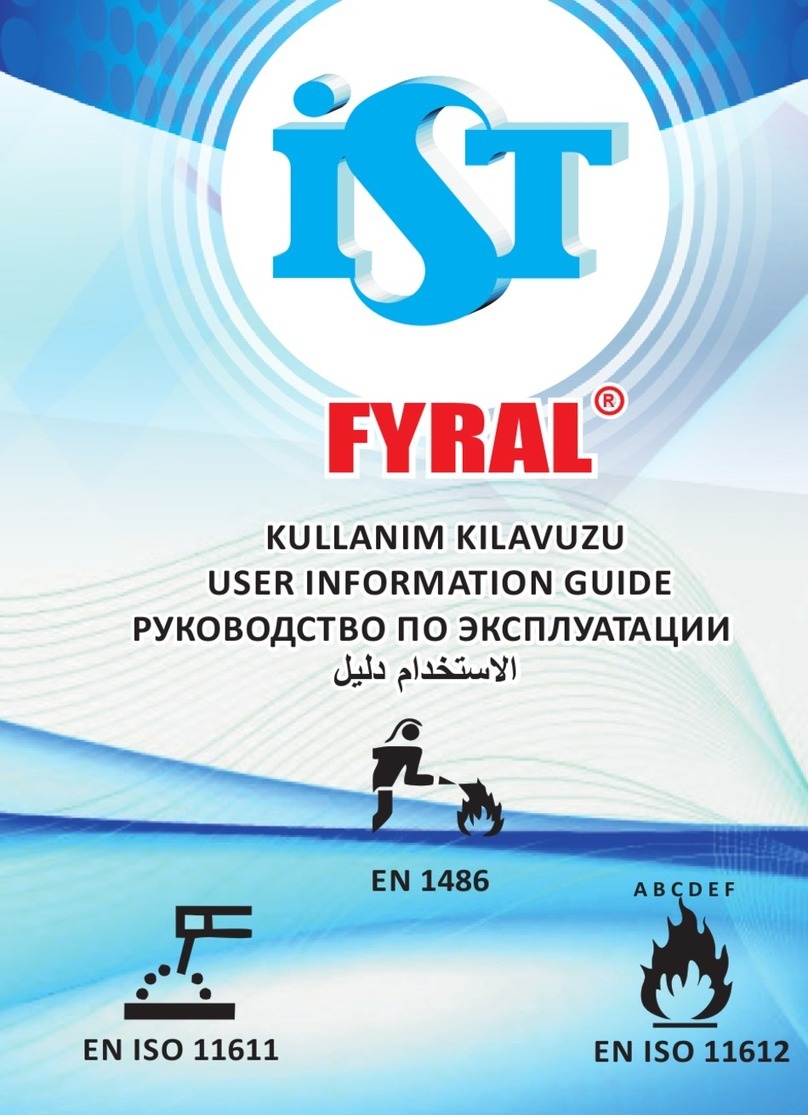
IST
IST FYRAL Series User's information guide

Amerex
Amerex 630 Installation, operating & servicing instructions

Tyco
Tyco TY-FRB Series quick start guide
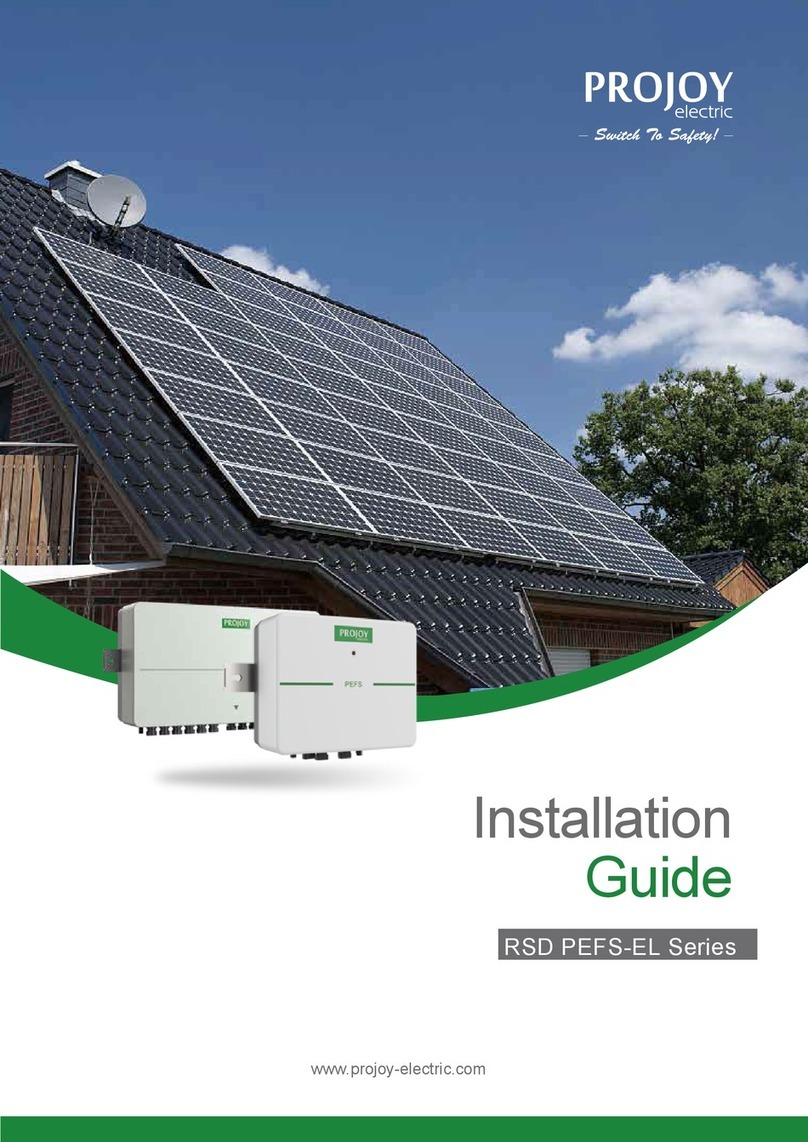
Projoy Electric
Projoy Electric RSD PEFS-EL Series installation guide
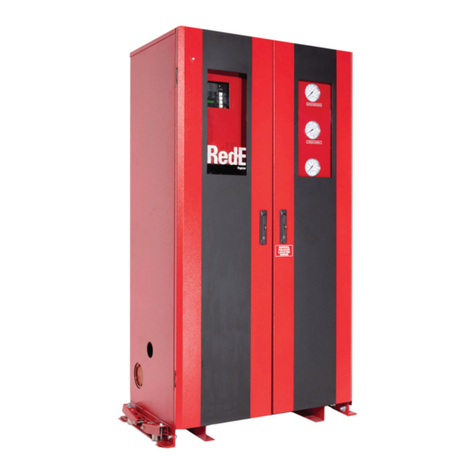
Tyco
Tyco DV-5A quick start guide
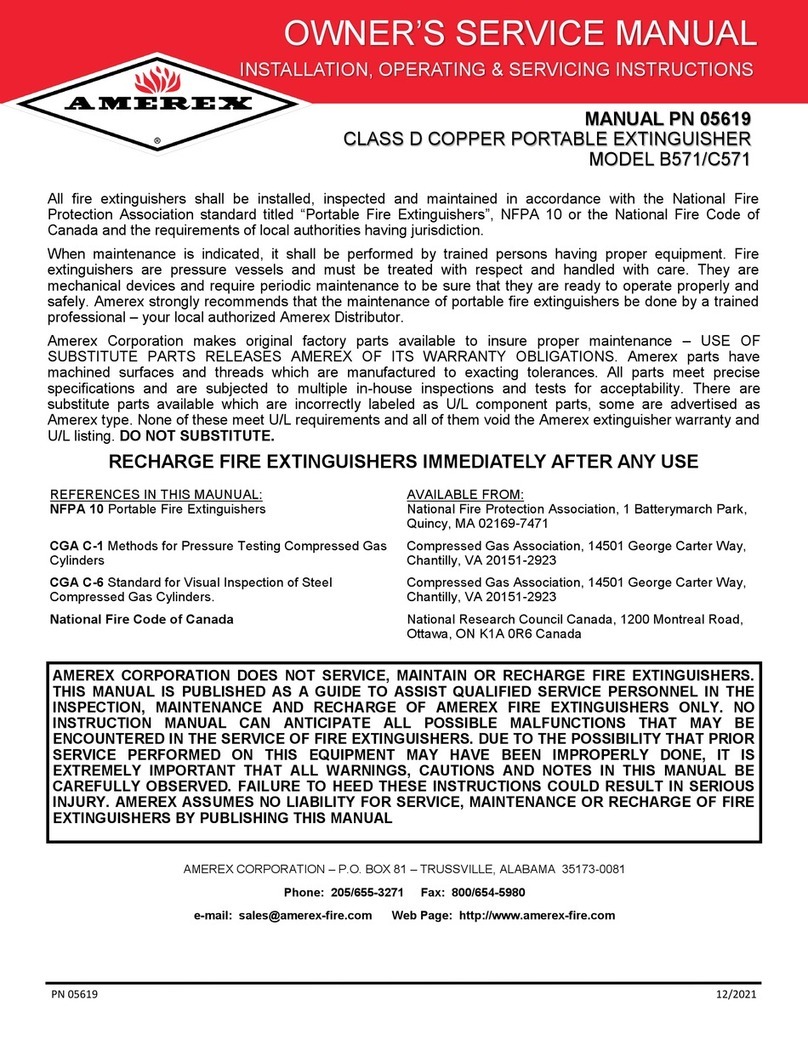
Amerex
Amerex B571 Owner's service manual

Tyco Fire Protection Products
Tyco Fire Protection Products F3200 Installation & configuration manual
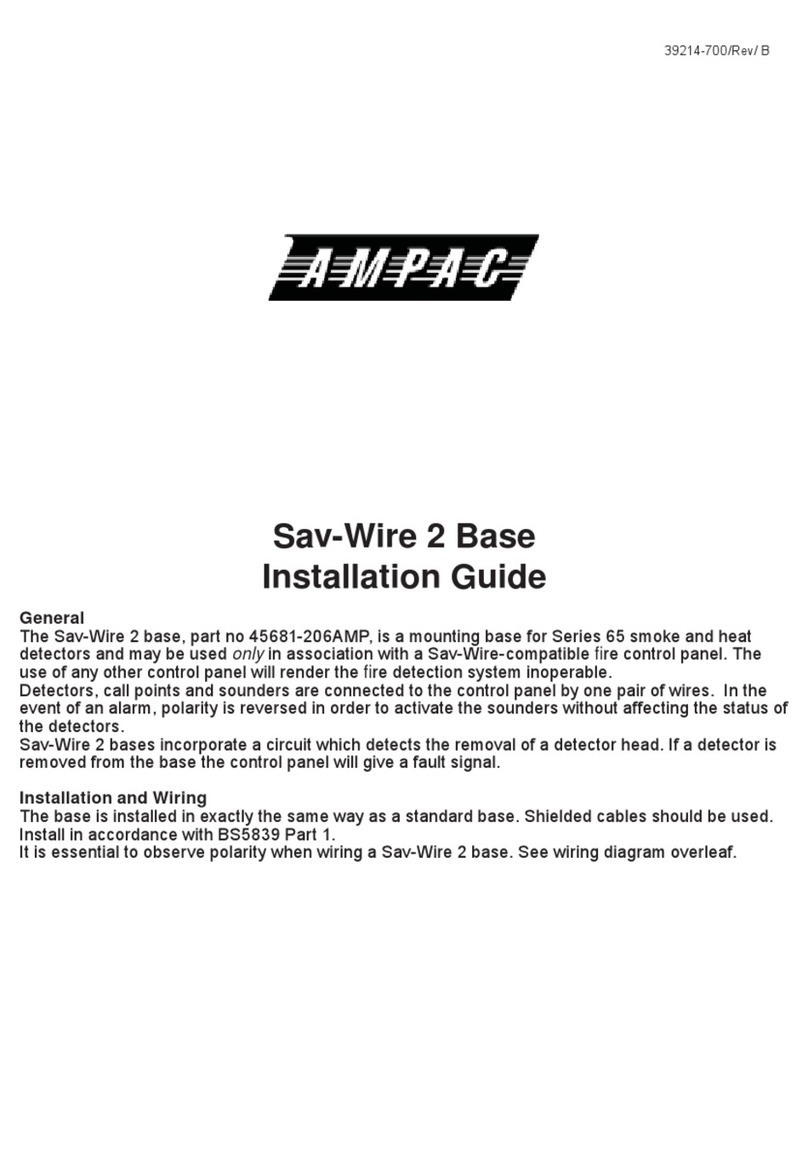
Ampac
Ampac Sav-Wire 2 Base installation guide

Emerson
Emerson 2400 instruction manual
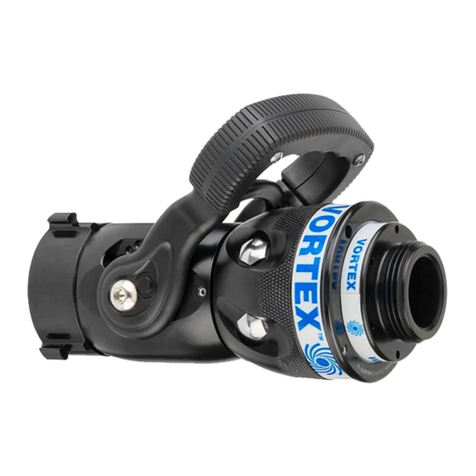
Task Force Tips
Task Force Tips Vortex 1.5" manual
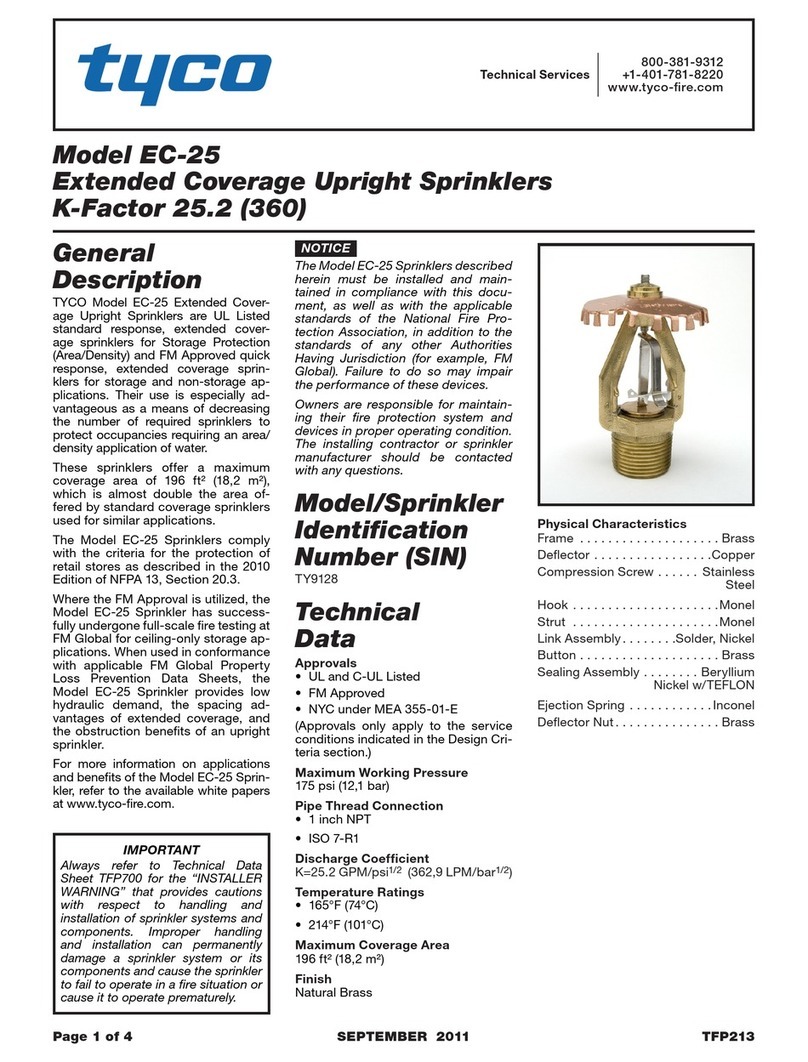
Tyco
Tyco EC-25 quick start guide